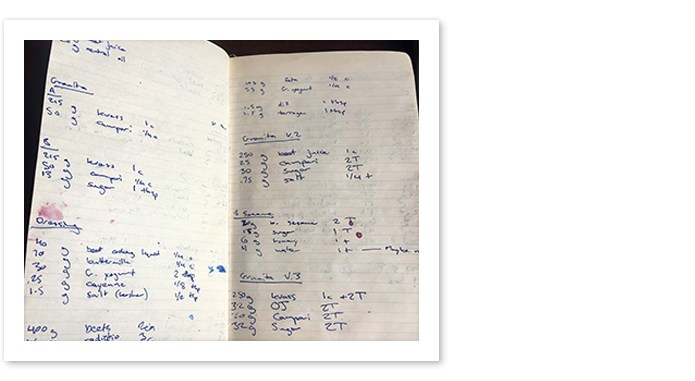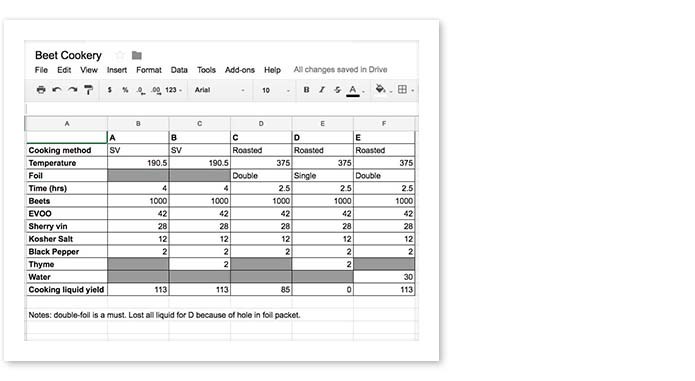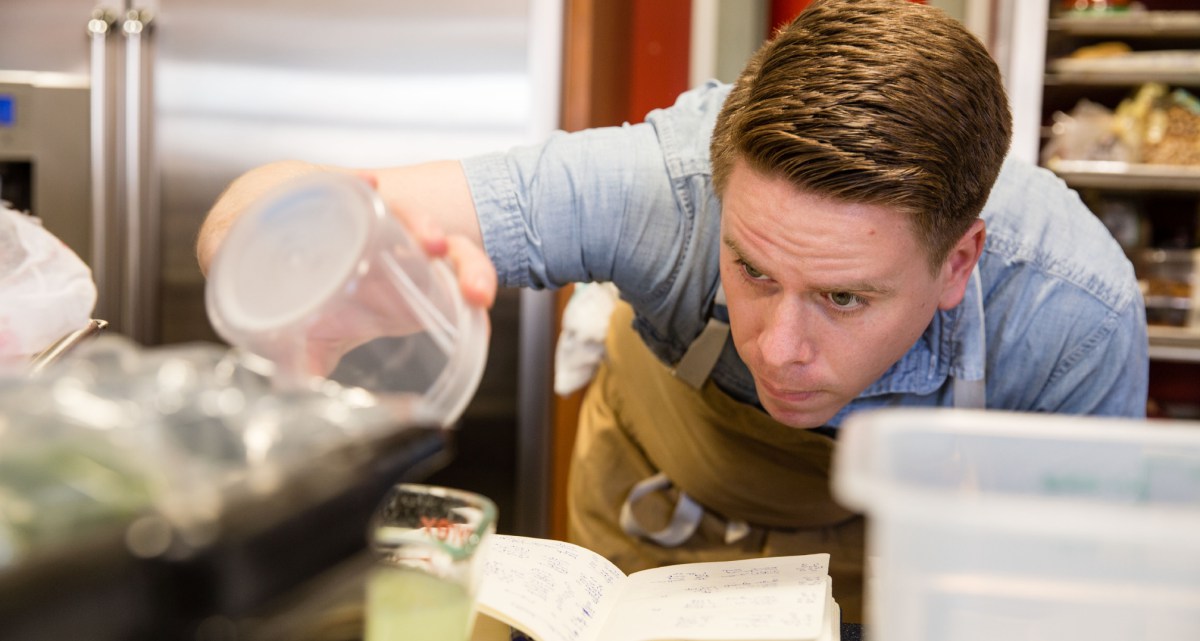In this weekly series, associate editor Tim Chin and test cook Sasha Marx take you behind the scenes of Cook’s Science and give you a glimpse into our recipe development process, from how we come up with recipe ideas, to test kitchen failures, to discoveries we make along the way. This week, Sasha shares some of his keys to success in the kitchen.
Being highly organized is a critical component of being a good cook, whether you’re on the line at a restaurant or in a home kitchen; there is even a Marie Kondo-esque book on the subject. Working “clean” in the kitchen is the first thing drilled into cooks upon entering a professional kitchen, and is fundamental to their success in a fast-paced, high-stress, and often overwhelming work environment. I vividly remember the first time I worked a station on the line, and how quickly the wheels came off. Just trying to keep track of a seemingly endless sequence of orders being called out by my chef at the pass—the spot where dishes are plated and picked up by wait staff—seemed a Sisyphean task. Properly cooking and plating the food I was responsible for, as well as coordinating timing with the other line cooks to have all the dishes for a table ready at the same time was daunting.
All “green” cooks go through this humbling initiation process. One of the key steps to moving out of this overwhelmed state is getting organized. Cooks who are unable to physically and mentally organize find themselves in over their heads and perpetually “in the weeds.”
Here at Cook’s Science, we don’t face the kind of grueling pressure experienced by cooks in the fine dining restaurant kitchens documented in the Netflix series Chef’s Table, but organization and working clean are still vital to our success—we aim to produce precise and consistently successful recipes on a tight publishing schedule.
In last week’s Behind the Scenes post, Tim wrote about our approach to coming up with creative recipe ideas. Once we’ve completed the brainstorming and recipe assignment process, our organizational guru and all-around bad-ass managing editor Kristin creates a schedule of deadlines for the upcoming batch of recipes, from when first drafts are due, to when photo shoots are scheduled, to when recipes need to be finalized for our copy editors’ eagle eyes. The turnaround time on these recipes can be pretty tight, so it’s critical that Tim and I are efficient and methodical with our approach. When I’m developing a recipe, I like to meet briefly with executive editor Dan each morning to talk through my game plan for the day. I then write a daily prep list (kitchen lingo for to-do list), prioritizing tasks by their importance and amount of time they will take, before I finally head downstairs to the kitchen.
Speaking of the kitchen, with all of the different publication teams at ATK, space in our shared test kitchen is always at a premium (at least until we move into our fancy new digs later this year). There aren’t assigned seats, so Tim and I try to set up our work stations near each other. This way so we can bounce ideas off each other throughout the day, and get quick-reaction tasting notes on recipes before we call team-wide tastings. As I work through the tasks on my daily prep list, I record progress and recipe measurements in a notebook. I prefer this analog approach to record-keeping in the test kitchen as I find that my laptop clutters up my workstation and I don’t want to worry about ruining my keyboard with beet juice (#testcookproblems).

Early on in the recipe development process Tim and I usually do a lot of side-by-side testing, meaning we change one variable across multiple versions of a dish, keeping everything else constant. For example, when developing a beet salad for our upcoming beet deep dive, I wanted to show the team why I think beets cooked using the sous vide method are superior in texture and flavor to oven-roasted beets. My contention was that when beets are cooked sous vide, the flavors of the aromatics and seasonings they’re cooked with penetrate deeply, virtually no moisture evaporates during cooking (a problem with roasted beets), and they have more consistent and appealing texture throughout (oven-roasted beets often have a softer exterior and a firmer center). I set up five tests with paired batches of beets cooked sous vide or roasted in the oven, and recorded lots of data, such as cooking time, technique, temperature, and the team’s reactions to the flavor and texture of each sample.
Along with group tastings, I keep everyone on the team updated on my recipe development by spending part of my day translating and transcribing my Moleskine chicken scratch into testing log spreadsheets and summaries (see below). This is usually when I break the news to Kristin that I’ve come up with two more recipes that I really want to include in the lineup at the last minute, once again ruining her perfect deadline schedule. Despite our name, we don’t have everything down to a science.

Regardless of whether you are working the line during dinner service, developing recipes at Cook’s Science, or making dinner for your family and friends, being organized and regimented is guaranteed to set you on the path to kitchen glory. Writing this piece got me thinking about easy tips and tricks for getting organized in the kitchen, wherever you are. Below are a few of my tried-and-true hacks:
If you’re working from a recipe, read it through. Twice. Jot down a sequence for the steps you are going to take. This will help you remember them and you can avoid constantly going back to read the recipe. Humming or singing those steps to the tune of a song is a trick that chef Jody Adams taught me during my line cook initiation. It sounds a little kooky but it works, and I still do it to this day.
Clear your work station of clutter. If you are working through a recipe that involves a lot of prep, don’t let it pile up around you, and especially not on your cutting board. Transfer those sliced onions to a bowl before starting on the peppers.
Assign designated spots for all utensils and ingredients and then keep them in their place. Once you measure out the flour for those cookies, put the bag back in the cupboard.
Keep a neatly folded kitchen towel on your station for wiping down your cutting board and work surface. Use it.
Clean as you go. Don’t let dirty pots, pans, and bowls pile up in your sink. Clutter is always bad, and having to tackle a mountain of dirty dishes after dinner takes the fun out of cooking an awesome meal.
Got any organizational tricks of your own? We’d love to hear them! Share them with us in the comments section!
Photography by Steve Klise.




